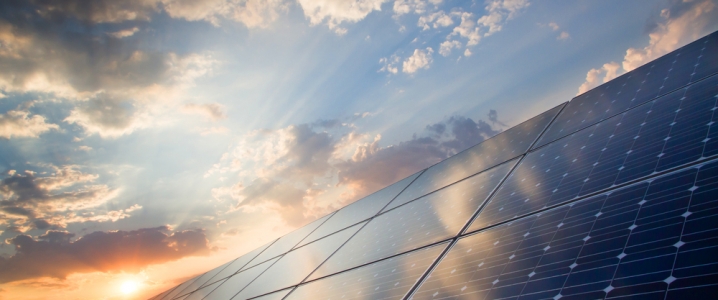Oilprice.com
By Oxford Business Group
In early August the Ministry of Energy, Mining and Sustainable Development (Ministère de l’Energie, des Mines et du Développement Durable, MEMDD) earmarked Dh2.3bn (€206.1m) for investments in solar power, to be directed towards projects capable of lifting agricultural output.
The capital will be used to promote the use of solar energy to power water pumps for irrigation as part of a plan to expand agricultural water access to more than 100,000 ha of new land by 2021. The move should also help reduce consumption of butane gas in farming operations, part of broader government efforts to shift towards clean energy.
Solar capacity expands at the Noor Ouarzazate complex
The government of Morocco has been pursuing renewable energy for some time. In mid-2016 Noor II and Noor III, the second and third facilities of the massive Noor solar power complex near Ouarzazate, were commissioned. Estimated to cost $9bn in total, on completion the Noor complex will be the largest of its kind in the world, providing power for 1.1m people.
King Mohammed VI inaugurated Noor I, the first stage of the project, in February of last year, bringing 160 MW of installed capacity to the national grid. The second and third phases will add 200 MW and 150 MW, respectively, and are scheduled to come on-line in 2018, while the project’s fourth and final stage, launched in April, will contribute another 70 MW.
The first three structures will use concentrated solar power technology – a technique whereby large mirrors channel the sun’s energy to heat liquid inside tubes that can then power turbines – while the fourth will use conventional photovoltaic panels.
Noor I has a thermal storage capacity that can supply three to five hours’ worth of power during peak demand hours after sunset – around 34,000 GWh, according to Morocco’s National Office for Electricity and Potable Water. Noor II will raise this to seven hours and Noor III will increase it to eight, using a power storage tower.
This technology will allow the complex to supply power by night as well as day – a major breakthrough in overcoming solar power’s inherent challenge of inconsistent supply.
42 percent of energy to come from renewables by 2020
Such capacity increases are much needed: according to the MEMDD, yearly national energy consumption is on track to reach 49 TWh by 2020 and 65 TWh by 2025, more than double the 28 TWh generated in 2014.
Although the country remains a net energy importer, it is making progress on its goal of securing 42 percent of its power needs from renewable sources by 2020 and 52 percent by 2030, with 20 percent to come from solar, 20 percent from wind and 12 percent from hydro. In 2009 Morocco generated just 1.7 percent of its electricity from renewables, but by last year this had risen to 34 percent.
Government plans envision another 10,000 MW of renewable capacity joining the national grid by 2030: 4560 MW from solar, 4200 MW from wind and 1330 MW from new hydropower dams.
While solar will continue to dominate, wind power will provide the second-largest share of clean energy. The kingdom is already home to Africa’s largest wind farm. With installed capacity of 300 MW, the three-year-old wind power complex near the southern town of Tarfaya generates power for 1.5m homes and has helped to reduce CO2 emissions.
Rising demand and environmental concerns influence generation prospects
The case for renewables in Morocco is compelling, given high solar irradiation and rising demand. The kingdom is among the sunniest countries in the world, with around 3000 hours of sunshine per year.
Related: Oil Prices At A Ceiling, Or Just Getting Started?
Demand for power has grown by 6.6 percent per year for the last decade, at the same time that environmental pressures have become more apparent. The average temperature in Morocco is expected to rise by 0.5-1°C by 2020, by another 1°C by 2050 and 1.5°C by 2080. Rainfall, meanwhile, could decline by as much as 30 percent by 2100, putting pressure on cooling and irrigation systems.
On August 7 and 8 the country registered a historic spike in energy demand due to extremely high temperatures, which triggered widespread use of air-conditioning and irrigation.
According to the National Office for Electricity and Potable Water, the sector’s oversight authority, maximum daily consumption reached a historic high of 124,190 MWh on August 8 – up 2931 MWh on the record from the previous year.
By Oxford Business Group








